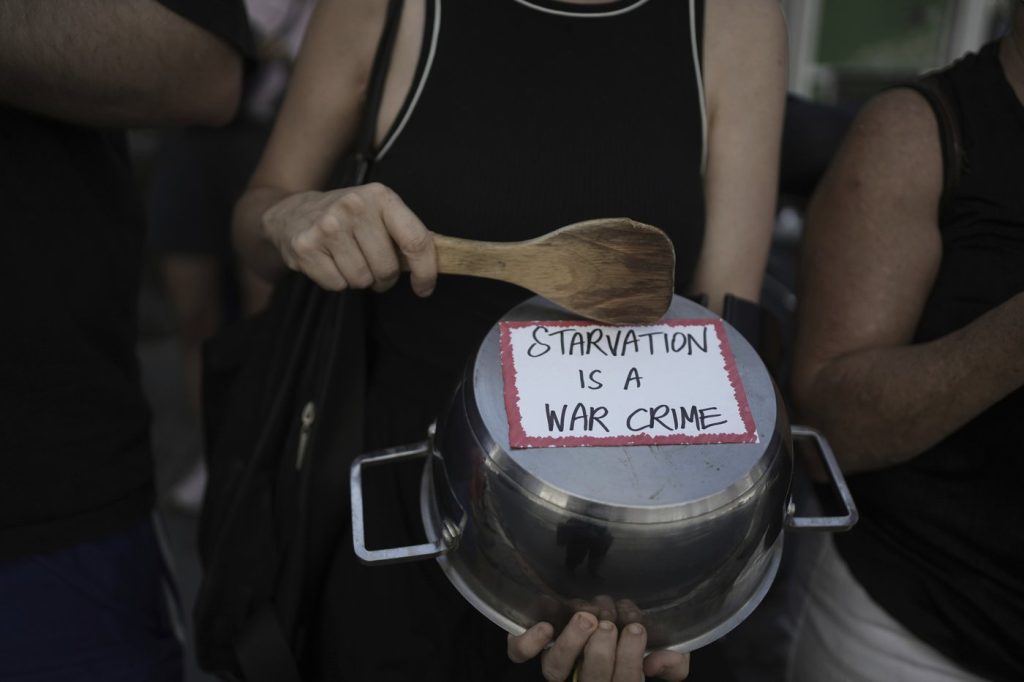World
Israeli Media Begins to Acknowledge Gaza’s Humanitarian Crisis

The portrayal of the humanitarian crisis in the Gaza Strip is changing within Israeli media. For much of the past two years, outlets have focused on stories of Israeli resilience and military actions, largely overlooking the suffering of Palestinians. Recently, however, some Israeli news channels have begun to report on the dire conditions faced by Gazans, including graphic images of malnourished children and in-depth accounts of daily struggles.
This shift in coverage coincides with rising global criticism of Israel’s military actions in Gaza. According to communications professor Eran Amsalem from Hebrew University, the change reflects internal debates in Israel about the ethical implications of ongoing military operations. “It’s not just about caring for the situation in Gaza, but also examining whether our military actions align with our objectives,” Amsalem stated.
The backdrop to this evolving narrative is the attack on Israel by Hamas on October 7, 2023, which resulted in approximately 1,200 deaths, predominantly civilians, and led to the capture of 251 hostages. The initial shock of this event galvanized Israeli public sentiment, while international media quickly shifted focus to the situation in Gaza following the subsequent military response.
For much of the conflict, Israeli media has been criticized for its limited coverage of the humanitarian impact on Gazans. Raviv Drucker, a notable Israeli news anchor, highlighted that reports often frame the crisis solely from the Israeli perspective, neglecting the broader humanitarian implications. “During most of the war, the Israeli media really reported very little on the suffering in Gaza or the hunger or destruction,” Drucker noted.
International journalists have faced significant challenges in covering the conflict, with the Committee to Protect Journalists labeling it the deadliest conflict for reporters to date, with at least 189 Palestinian journalists killed due to Israeli fire. The Israeli government has restricted access for foreign media, only allowing organized visits by military personnel, which hampers comprehensive reporting from the ground.
Despite the risks, some Israeli journalists have attempted to shed light on the humanitarian catastrophe. Yonit Levi, a prominent news anchor, faced backlash for her candid remarks about the moral implications of the situation. During a report in July, she stated, “Maybe it’s time to understand that this is not a failure of public diplomacy, but a moral failure.” Critics, including analysts on pro-Netanyahu outlets, labeled her comments as aligned with Hamas.
The toll of the ongoing military offensive has been devastating. The Gaza Health Ministry reports that over 64,000 Palestinians have died since the conflict escalated, though Israel disputes these figures without providing alternative statistics. The ministry, operating under the Hamas-led government, is regarded as a credible source by various international organizations.
In recent weeks, a notable shift in media coverage has emerged. Some Israeli news programs have begun to air interviews with Gazans, albeit carefully edited to protect the identities of those involved. Reports highlighting the starvation crisis, exacerbated by a prolonged ban on humanitarian aid, have gained traction.
Despite these changes, mainstream coverage continues to focus heavily on domestic issues. Publications like Haaretz, known for its left-leaning stance, have consistently reported on Palestinian experiences, often critiquing Israeli military actions. Nir Hasson, a journalist for the newspaper, expressed concern about the current media environment, stating, “After October 7, there’s no doubt that something was broken, and it became completely illegitimate to deal with the pain of the other side.”
As the conflict continues, the ability of Israeli media to address the humanitarian crisis in Gaza remains uncertain. The evolving landscape of public discourse may ultimately influence how these stories are told, reflecting a complex interplay between national sentiment and international scrutiny.
-

 Science3 months ago
Science3 months agoToyoake City Proposes Daily Two-Hour Smartphone Use Limit
-

 Top Stories3 months ago
Top Stories3 months agoPedestrian Fatally Injured in Esquimalt Collision on August 14
-

 Health3 months ago
Health3 months agoB.C. Review Reveals Urgent Need for Rare-Disease Drug Reforms
-

 Technology3 months ago
Technology3 months agoDark Adventure Game “Bye Sweet Carole” Set for October Release
-

 World3 months ago
World3 months agoJimmy Lai’s Defense Challenges Charges Under National Security Law
-

 Lifestyle3 months ago
Lifestyle3 months agoVictoria’s Pop-Up Shop Shines Light on B.C.’s Wolf Cull
-

 Technology3 months ago
Technology3 months agoKonami Revives Iconic Metal Gear Solid Delta Ahead of Release
-

 Technology3 months ago
Technology3 months agoApple Expands Self-Service Repair Program to Canada
-

 Technology3 months ago
Technology3 months agoSnapmaker U1 Color 3D Printer Redefines Speed and Sustainability
-

 Technology3 months ago
Technology3 months agoAION Folding Knife: Redefining EDC Design with Premium Materials
-

 Business3 months ago
Business3 months agoGordon Murray Automotive Unveils S1 LM and Le Mans GTR at Monterey
-

 Technology3 months ago
Technology3 months agoSolve Today’s Wordle Challenge: Hints and Answer for August 19









